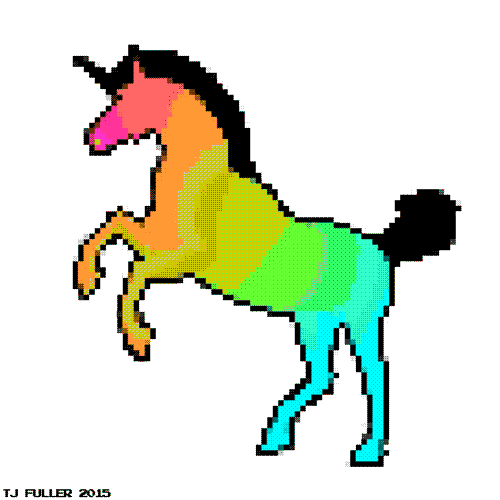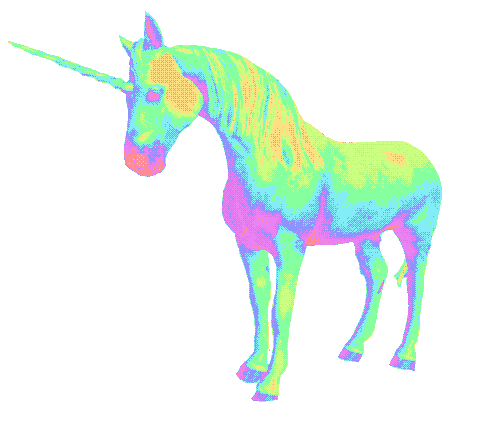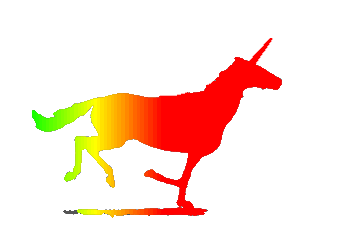🌈🦄 Rainbow Unicorn Torah!
Catch magic before it’s gone.
This is Life as a Sacred Text, an expansive, loving, everybody-celebrating, nobody-diminished, justice-centered voyage into one of the world’s most ancient and holy books. We’re working our way through Exodus these days. More about the project here, and to subscribe, go here.
Are you in the mood for some rainbow unicorn Torah? And if you aren’t, maybe today’s installment will get you there.
So. Ok. In Exodus 25, God gives us some instructions for building the Tabernacle, a special space for divine indwelling, and human worship— what we Jews call the Mishkan.
There’s a list of stuff the Israelites have to get, make and do for the construction of said Mishkan. There are a bunch of very specific things.
God spoke to Moses, saying: Tell the Israelite people to bring Me gifts; you shall accept gifts for Me from every person whose heart is so moved. And these are the gifts that you shall accept from them: gold, silver, and copper; blue, purple, and crimson yarns, fine linen, goats’ hair; tanned ram skins, dolphin skins, and acacia wood; oil for lighting, spices for the anointing oil and for the aromatic incense. (Exodus 25:1-6)
Ok, cool, cool.
But... wait...
“goats’ hair; tanned ram skins, dolphin skins..”
Dolphin skins?! They’re wandering in the desert... where did these dolphins come from??
So the Hebrew word here is tachashim, which would be tachash in the singular.
So let’s talk about this tachash, shall we?
Various commentators suggest different animals that this might be. A dolphin. A weasel, a badger. A German scholar—Heinrich Gesenius—suggested in 1812 that it was a seal. The Brown Driver Briggs dictionary in 1912 thought maybe it was a porpoise. Israel Aharoni asserted in 1938 that it was a narwhal. Some scholars suggest it was talking about beaded leather. Others suggest that it was northern giraffe hide.
But! But.
Onkelos (35-120 CE) translated the Torah into Aramaic, and translated the tachashim as ססגונה/sasgavna. What does that mean??
The Talmud (Shabbat 28a) offers an interpretive read of it as a creature that rejoices (sas, like the-not-quite-similarly-spelled word sasson, ששון for those of you who know Hebrew) in its colors (like the word shades/coloring, גונים gvanim). Notably, sasgoni in Modern Hebrew means, “multicolored,” from the Aramaic, probably from this exact translation moment.
Rashi, the 11th c. commentator, adds that it—well, it does something that could be translated as “boasts” of being multicolored, or is “proud” of being multicolored. (Just to note that the gates of queer Torah interpretation have been opened, here. 🏳️🌈 😉 🏳️🌈).
In any case, it’s this set of assumptions that leads Midrash Tanhuma (Trumah 6) to go off in this homiletic direction (and let’s remember that midrash is a fanciful, not necessarily literal engagement with the text, OK? This isn’t a history lesson, today):
“This is the offering … and rams’ skins dyed red, and tachashim” (Exodus 25:3). Rabbi Judah and Rabbi Nehemiah discussed this verse. Rabbi Judah said: It was a large, ritually pure animal, with a single horn in its forehead and a skin of six different colors that roamed the desert. They captured one of them and from its skin made a covering for the ark.
Rabbi Nehemiah contended that it was a miraculous creature God created for that precise moment, and that it disappeared immediately thereafter from earth.
Why is it called orot tahashim (lit. “skins of tahashim”)? Because the verse states: “The length of each curtain shall be thirty cubits” (Exodus 26:8). What known animal could supply enough skin for a curtain of thirty cubits [roughly 44 feet]? It must, indeed, have been a miraculous creation, which disappeared (immediately after it was created).
A LARGE, RITUALLY PURE ANIMAL WITH ONE HORN AND A HIDE OF SIX COLORS?!?

LIKE..?

I MEAN..?

There’s so much going on in that midrash—it merits unpacking a little bit, piece by piece. So let’s look again, shall we?
“This is the offering … and rams’ skins dyed red, and tachashim” (Exodus 25:3). Rabbi Judah and Rabbi Nehemiah discussed this verse. Rabbi Judah said: It was a large, ritually pure animal, with a single horn in its forehead and a skin of six different colors that roamed the desert. They captured one of them and from its skin made a covering for the ark.
OK, can we just pause to appreciate this, for a moment? The 🌈ginormous rainbow unicorns🌈—sorry, the tachashim—are wandering around the desert in packs or families or whatever, (what’s the collective noun of a gigantic Biblical rainbow unicorn?) eating whatever vegetation they eat (what do they eat, I wonder? It says that they are ritually pure animals, so they must be herbivores, in any case).
And then one of them gets captured! And skinned! So that its gorgeous hide can be part of the Mishkan, and serve the indwelling divine! Truly serving God, in a powerful way.
But never fear, it says that the animal is tahor, is ritually pure. This also means that it is, among other things, kosher, permitted to eat. So yes, this whole midrashic line of inquiry opens up the possibility of rainbow unicorn steaks. Kind of makes that whole cupcake trend look like amateur hour, eh?
But yes, as my teacher and friend Rabbi Aryeh Cohen (who you should follow on Twitter and whose extraordinary book on creating a just city you should read) pointed out, the tachash would have been dedicated to the Mishkan for holy use, so probably only the priests would have been allowed to eat the unicorn burgers—though, as he notes, Impossible Unicorn was probably also pretty tasty.
I will also note that tachash leather is used elsewhere in the Bible, in the Book of Ezekiel. We see God say in Ezekiel 16:10,
“I clothed you with embroidered garments, and I shod you with [the skin of the] tachash.”
So you can imagine how fabulous those kicks would have been.
Anyway. As we continue:
Rabbi Nehemiah contended that it was a miraculous creature God created for that precise moment, and that it disappeared immediately thereafter from earth.
Why is it called orot tahashim (lit. “skins of tahashim”)? Because the verse states: “The length of each curtain shall be thirty cubits” (Exodus 26:8). What known animal could supply enough skin for a curtain of thirty cubits [roughly 44 feet]? It must, indeed, have been a miraculous creation, which disappeared (immediately after it was created).
So. An astoundingly massive rainbow unicorn—roughly the size of a T-Rex to get the necessary curtain needed—that came into being for the needs of the hour, and then vanished whence it came.
Can you imagine?
I mean, on the very literal, almost slapstick level, I can imagine this cinematically, animated—Israelite children in the Sinai desert, suddenly looking up and saying (and yes, I know they were in the Ancient Near East, speaking Hebrew, but in my mind’s eye they’re speaking Peppa Pig British English in this lil’ animated short), “Look, Mummy, what’s that?” And the parent saying, (also with the Peppa Pig accent) “I believe It’s a tachash!”
But of course, this midrash is getting at something deeper, more profound than all of the goofing around I’ve been doing here—beyond the unicorn brisket, beyond the T-Rex rainbow animals skulking around.
Can you imagine something exquisite, miraculous, appearing when you needed it—just the thing that manifests for the needs of the hour?
Can you imagine that it might have already happened?
How many times have you been so distracted, tuned out, numbed out, avoidant, doomscrolling, that you didn’t lift your eyes to see what might have come into being for you, right when you needed it?
Or to hear the words, the wisdom that was already there inside you while you were wondering how on Earth you were going to find the thing?
Here, this amazing, exquisite thing was created, brought into being and we mostly missed it—calling it a badger or a weasel or a dolphin.
Chasing after the mundane because we’re too stubborn, too afraid, too unwilling to see the extraordinary.
There is magic all the time that we don’t see, miss completely, forget.
What are the exquisite miracles you need to be careful not to miss today?
Like this? Get more:
For free every Monday—sign up at the ‘Subscribe now’ button just below.
And you can get even more as part of a community of rabble rousers going deep into the questions and issues, with even more text and provocation, every Thursday.
And please know that nobody will ever be kept out due to lack of funds. Just email lifeisasacredtext@gmail.com for a hookup.
And if you’d like to underwrite one of these donated subscriptions, you can do so here.
And if it resonated with you, please share this post:
Sending a big pile of blessings and goodness your way.

